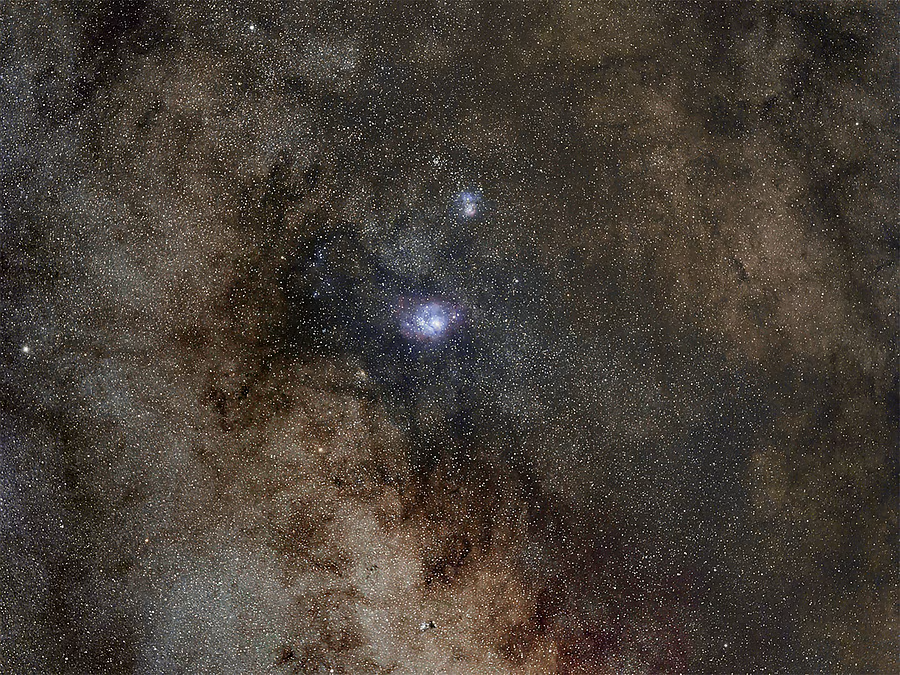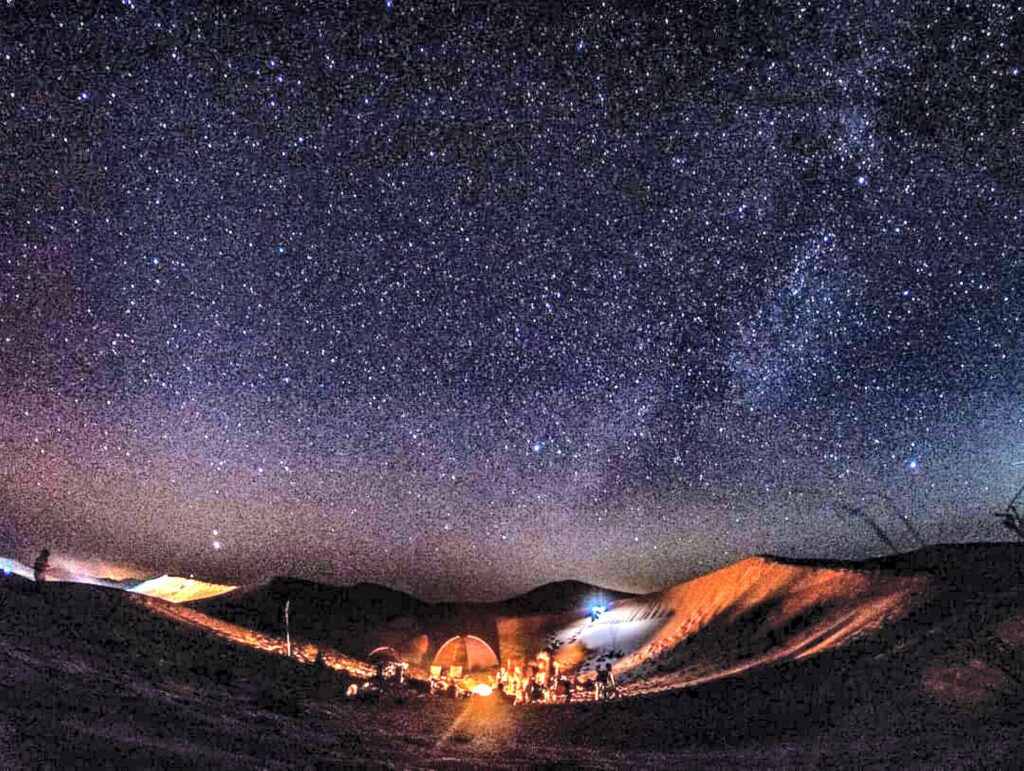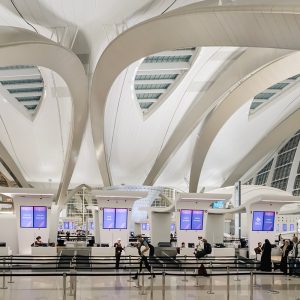The Milky Way over Abu Dhabi desert has recently been captured in stunning photographs that reveal the beauty and vastness of our galaxy. On a clear night in the Al Quaa desert, thousands of stars, nebulae, and star clusters become visible, including the Lagoon Nebula and the Trifid Nebula. These celestial wonders create a breathtaking scene that attracts astronomers, photographers, and travelers from around the world.
Al Quaa desert, located about 150 kilometers from Abu Dhabi city, is one of the best locations in the UAE for stargazing. Its remote location ensures very low light pollution, giving visitors a clear view of the night sky. Both amateur and professional astronomers find this desert ideal for observing the Milky Way and other celestial objects.
Why Al Quaa Desert is Ideal for Stargazing
Al Quaa is known as the darkest desert spot in the UAE. The absence of city lights allows the stars to shine brightly, making it possible to see the Milky Way in its full glory. Visitors can witness a wide array of celestial events, including shooting stars, constellations, and star clusters.

Travelers looking for a unique experience can also enjoy the calm and quiet of the desert. The combination of vast open spaces and a dark sky makes Al Quaa a perfect destination for night photography and stargazing tours.
Best Time to See the Milky Way
The best months to see the Milky Way in the UAE are from April to September. During this time, the skies are usually clear, and the galaxy’s core is visible. To get the most vivid view, plan your visit around the new moon, when the sky is the darkest and moonlight does not interfere with stargazing.

The Milky Way is best seen in the late evening and early night hours. Visitors should plan to arrive at the desert just before sunset to set up for photography or stargazing sessions.
Tips for Capturing the Milky Way
For those who want to photograph the Milky Way over Abu Dhabi desert, here are some practical tips:
- Use a wide-angle lens with a focal length between 14mm and 24mm to capture more of the sky.
- Set your camera ISO between 1600 and 3200 to capture the faint light of stars.
- Use the “500 Rule” to avoid star trails: divide 500 by your lens’s focal length to get the maximum exposure time in seconds.
- Always use a tripod to keep the camera stable.
- Shoot in RAW format for better flexibility in post-processing.
By following these tips, photographers can capture sharp and bright images of the Milky Way, showing the detailed structure of the galaxy and its surrounding nebulae.
Stargazing Tours in Al Quaa
Several tour operators provide guided stargazing experiences in Al Quaa. These tours usually include transportation, camping gear, and expert guidance on observing the night sky. Some tours offer private experiences, allowing visitors to enjoy the desert without crowds. Participating in a guided tour can enhance your experience, as local experts know the best locations and times to see celestial events.

Celestial Wonders Visible in the Night Sky
During a visit to Al Quaa desert, stargazers can observe many celestial objects:
- Milky Way Core: A dense cluster of stars at the center of our galaxy.
- Nebulae: Regions of star formation like the Lagoon and Trifid Nebulae.
- Star Clusters: Groups of stars bound together by gravity.
- Constellations: Well-known patterns such as Sagittarius and Scorpius.
These features make stargazing a fascinating experience. Observing them firsthand can give a sense of the vastness of the universe and the beauty of the night sky.
Desert Experience Beyond Stargazing
Visiting Al Quaa desert is not only about stargazing. Travelers can also enjoy:
- Camel rides that give a traditional desert experience.
- Desert photography during sunset and night, capturing the dunes and sky.
- Local culture and cuisine for a more immersive experience.
These activities make a trip to Al Quaa a complete adventure, combining natural beauty, cultural exposure, and cosmic wonder.
Safety and Preparation Tips
To have a safe and enjoyable experience in the desert, visitors should follow these guidelines:
- Travel with a group or a tour guide for safety.
- Bring water, food, and warm clothing, as temperatures can drop at night.
- Stay on marked paths to avoid disturbing the desert ecosystem.
- Check weather forecasts to ensure clear skies for stargazing.
By preparing properly, visitors can enjoy the Milky Way and the desert environment without any difficulties.
Conclusion
Seeing the Milky Way over Abu Dhabi desert is a magical experience. The Al Quaa desert offers clear skies, minimal light pollution, and a peaceful environment that allows visitors to connect with nature and the universe. Whether you are a professional astronomer, a photography enthusiast, or someone who simply loves nature, this desert provides an unforgettable stargazing experience. Planning a visit during the right months, preparing for the desert conditions, and following safety measures can make the trip both safe and memorable.
Experiencing the Milky Way over Abu Dhabi desert is more than just observing stars; it is an opportunity to witness the universe’s grandeur and enjoy the serenity of one of the UAE’s most beautiful natural locations.
Do follow UAE Stories on Instagram
Read Next – Solaya Beachfront Homes in Jumeirah 1: Luxury Coastal Living in Dubai















